Multifunctional fibres for air laid and dry laid applications

Niels K. Christensen
FiberVisions, Denmark
Presented at Edana's 2000 Nonwoven Symposium
Introduction
The air laid technology has existed for many years now. At the beginning the only bonding method used was latex bonding, but thermal bonding was added to air laid technology 8-10 years ago.
As a producer of bicomponent fibres and with the very short distance to the two most important manufactures of air laid lines Dan-Web and M&J Fibretech, Danaklon a/s, now FiberVisions has been trying to tailor make bicomponent fibres to the needs of the thermal bonded air laid technology.
This paper is divided into three parts. The first part compares the global capacity for air laid thermal bond with the historic total sales of air laid thermal bonded products.
The second part shows some of the developments made with bicomponent fibres for the air laid industry. This can be used when choosing which type of fibre to use in an air laid product.
The last part introduces some new bicomponent fibres offering considerably higher tensile strength in the product and reducing dust extensively compared to other fibres on the market.
Capacity and sales of thermal bonded air laid
The first commercial air laid line with thermal bond capability was set up by Walkisoft in Arhus, Denmark in 1992 and the second one was set up by Concert in Thurso in Canada in 1994. Both these lines are only capable of thermal bonding - not latex bonding.
Since then several new lines capable of both thermal bonding and latex bonding have been erected in North America and in Europe. The development of world wide air laid capacity with thermal bond capability can be seen from Figure 1. It is not all of the increases in capacity that represent installation of new lines. Some of the additions in capacity with thermal bond capability are old latex lines, where the thermal bond technology has been added to the line.
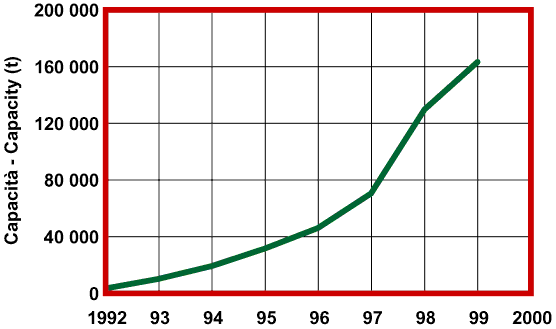
Figure 1: The Global Airlaid Capacity with Thermal Bonded Capability
The large increase in air laid with thermal bond capability indicates a huge interest in thermally bonded air laid products.
I do not pretend to know exactly how many thermally bonded air laid products are sold worldwide. But I do have a pretty good idea of what the total sales are from our own sales of bicomponent fibres for this application and from my assumptions about our competitors sales of bicomponent fibres for this application.
My estimation of the total sales of thermally bonded air laid products is shown in Figure 2. The sales have only increased rather slowly until 1997. Every year the sales only increased by less than 3-4,000 tons - although the increase in percentage was high. But from l997 to 1998 the sales suddenly took a bigger jump of more than twice as much as what had been seen until then.
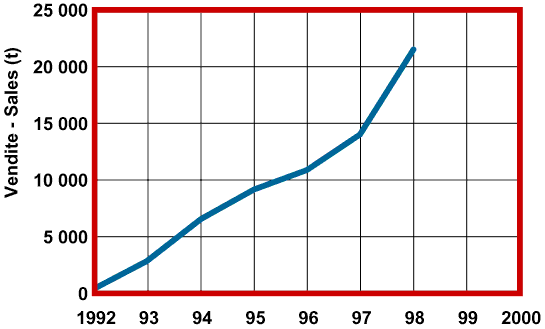
Figure 2: Estimated Global Sales of Airlaid Thermal Bonded Products
However Figure 3 shows that the capacity has been growing much more than the sales. This means that most of the capacity of the hybrid lines is actually used for latex bonding. Even though my estimation of the sales could be off by 50% or maybe even more, there is still ample capacity for thermally bonded air laid. Yet Concert has announced they will install their second air laid line with thermal bond capability in Germany and more lines will follow.
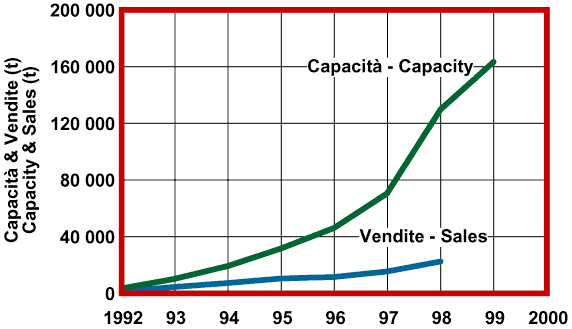
Figure 3: The Global Airlaid Capacity and Sales of Thermal Bonded Products
It looks like many companies and people believe there will be a big increase in demand for air laid thermal bonded products and are just waiting for this to happen.
The roll out of a major diaper with air laid thermal bonded absorbent core would certainly increase the demand and would swing the output from latex bonded to thermally bonded on some of those lines, that are capable of both.
Introduction of new fibres improving the competitiveness of thermally bonded air laid compared to latex bonded air laid will of course also shift the capacity utilisation between thermal - and latex bonded.
Trends in fibre development
With this large potential market for bicomponent fibres for air laid applications it is only natural for FiberVisions to develop and tailor make fibres for this technology, and today we have a wide range of fibres available - and more will come.
Danaklon in Denmark began working with these fibres almost 10 years ago. At the beginning everybody was happy just to get a fibre through the system that could bond thermally and form a grid to which the pulp could attach.
The first fibre type to be used was an eccentric PP core, PE sheath bicomponent fibre with 50% PE and 50% PP cut in 6 mm. A lot of trials were made at Dan-web's pilot line and also at M&J with fibres with different crimp levels and different degrees of fibre openness to find the fibre offering the highest throughput and best looking product. Today this fibre is called AL-Thermal-E.
AL-Thermal-C
By the time the first commercial air laid line with thermal bonding started up, the AL Thermal C fibre had been developed. This is also a fibre with 50% PP core and 50% PE sheath, but it is concentric. The trials with AL-Thermal-E were repeated with AL Thermal-C at both Dan-web and M&J - again to find the optimum levels of crimp, fibre openness etc.
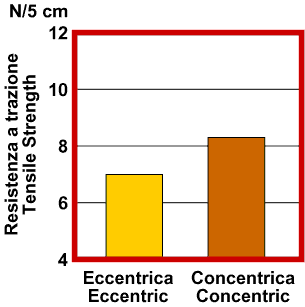
Figure 4: CD Tensile Strength for a 95 g/sqm product, 25% Bico Eccentric and Concentric (50/50%, 3.3 dtex, 6 mm)
Figure 4 shows the increase in CD tensile strength when going from the eccentric type to the concentric type. Only the CD tensile strength is shown here, because the CD and MD tensile strength are almost equal on an air laid line. Figure 5 shows the cross section for both the eccentric type and the concentric type. The reason for the increase in tensile strength is that for the concentric type the core is completely surrounded by the PE sheath. So for each contact point created in the grid there will be bonding material present to establish a bonding point.
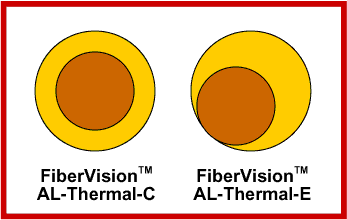
Figure 5: The two basic cross sections for AL-Thermal-E and AL-Thermal-C
When the concentric type was introduced the main interest was to increase the tensile strength. Dust reduction was not really an issue back then, but the concentric type does give a considerable dust reduction compared to the eccentric type.
The concentric type will give a more dense product, which is fine, if the application is a thin absorbent core. But if anybody wants more bulk, they should use the eccentric type and will then have to accept the lower tensile strength or use more fibres to compensate for the fewer bonding points.
From Figure 6 it can be seen how the CD tensile strength decreases with increasing crimp level of the fibre. This decrease in tensile strength may partly be due to the fact, that the fibre is damaged more the higher the crimp level is, and maybe the more crimped fibre will have less contact points in the product and therefore also fewer bonding points.
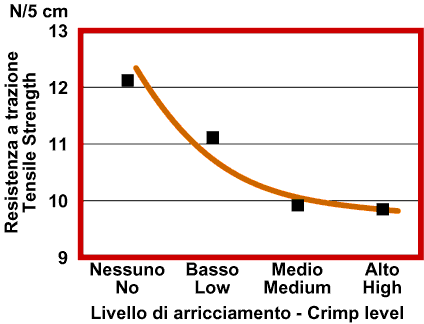
Figure 6. CD Tensile Strength for a 95 g/sqm product, 25% AL-Thermal-C
(50/50%, 2.2 dtex, 6 mm)
A fibre with low crimp also offers a higher throughput rate than a fibre with high crimp. The more open (separated) the fibre is, the higher the tensile strength will be as can be seen from Figure 7. The reason being that if two or more fibres are completely aligned, we will not get more bonding points, than if we only had one fibre.
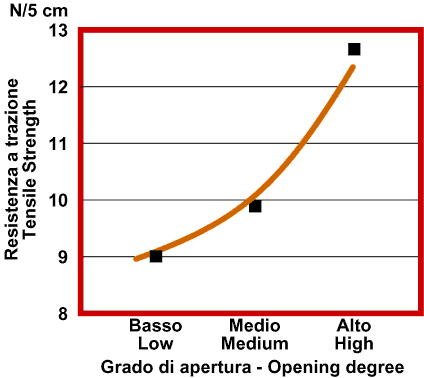
Figure 7: CD Tensile Strength for a 95 g/sqm product, 25% AL-Thermal-C
(50/50%, 3.3 dtex, 6 mm)
The more open the fibre is the higher the throughput will be, so again tensile strength and out put points in the same direction for the fibre characteristics. When looking at the fibre thickness there is a trade off between tensile strength and throughput. The throughput decreases with decreasing thickness of the fibre.
If you exceed a certain throughput for a certain fibre nits will be created. These are fibres that curl up and this is more likely to happen the softer the fibre is.
But the CD tensile strength increases with decreasing thickness of the fibre, as can be seen from Figure 8. This is of course because of the more bonding points. At the same time the amount of dust is decreased with the lower dtex fibres.
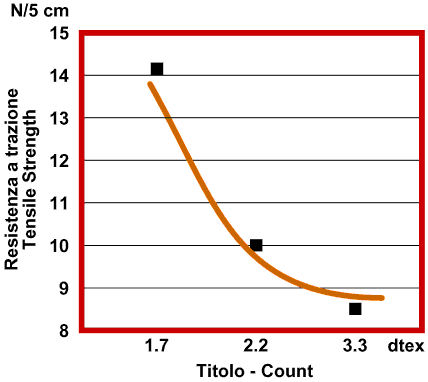
Figure 8: CD Tensile Strength for a 95 g/sqm product, 25% AL-Thermal-C§
(50/50%, 2.2 dtex, 6 mm)
When it comes to fibre length there is clearly a trade-off between CD tensile strength and output. Figure 9 shows the increase in CD tensile strength when going from a 6 mm fibre to a 12 mm fibre. But the throughput is also much lower when using a 12 mm fibre than when using a 6 mm fibre.
Therefore we invested in new cutter systems three years ago to be able to cut 3 and 4 mm fibres, which were preferred especially for M&J air laid lines in order to get as high throughput as possible.
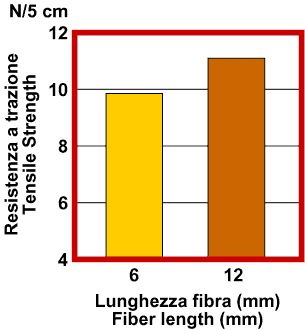
Figure 9: CD Tensile Strength for a 95 g/sqm product, 25% AL-Thermal-C (50/50%, 2.2 dtex)
AL-Special-C
When a thermally bonded web breaks it is normally because the bonding points break. Anything that strengthens the bonding points should therefore increase the tensile strength of the thermally bonded product. It is therefore a natural step to attempt to increase the amount of PE at the expense of PP.
Figure 10 shows how the CD tensile strength varies with the PE content. Up to a certain point the tensile strength does increase with the content of PE. But when exceeding that point, the PP core becomes the weak part and breaks before the bonding points do. The tensile strength will therefore start to decrease with increasing ratio of PE.
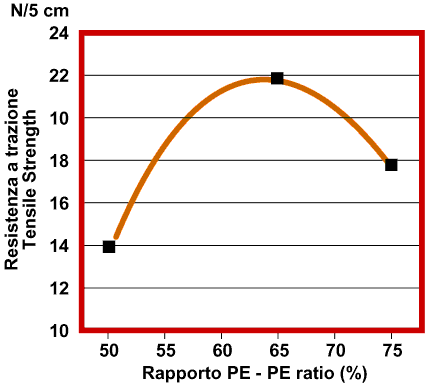
Figure 10: CD Tensile Strength for a 95 g/sqm product, 25% concentric bicomponent fibre (1.7 dtex, 6 mm)
The fibre, we sell most of today for air laid applications, is therefore a concentric 1,7 dtex fibre with 65% PE and 35% PP core. This fibre is called AL-Special-C.
Figure 11 shows again how tensile strength varies with fibre length, but this time with AL-Special-C 1,7 dtex on a M&J line keeping the throughput constant. It can be seen that the tensile strength increases with increasing fibre length and then starts to decrease. The drop in tensile strength when going from 5 to 6 mm fibres is due to the formation of more nits, and we get a poor distribution of fibres in the product. This can only be avoided by decreasing the output.
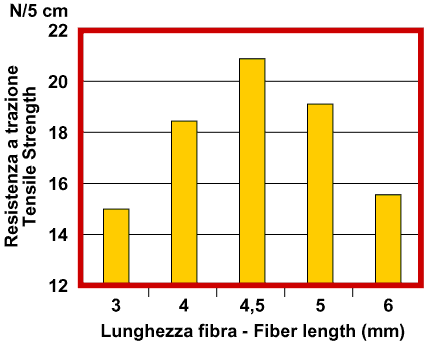
Figure 11: CD Tensile Strength as a function of fiber length for a AL-Special-E, 1.7 dtex on a M&J line with 140 kg/h output. 95 g/sqm product with 25% bicomponent fibre content
It is my understanding, that both Dan-web and M&J are working on improving their technology so their new lines will be able to process longer than 6 mm fibres with a satisfactory output.
The AL-Special-C fibre also reduces dust compared to an AL-Thermal-C fibre with only 50% PE. But that was still not a big issue when the AL-Special C fibre was first introduced.
Increasing the amount of PE tends to sacrifice output, because the fibre is less stiff, but this effect is rather small. More PE will also result in a less bulky product, but again this effect is small - especially if the bicomponent fibre is blended with other types of fibres.
Finally, Figure 12 shows how the tensile strength varies with the amount of thermal bondable fibres. As expected the tensile strength increases with increasing amount of AL-Special-C fibres.
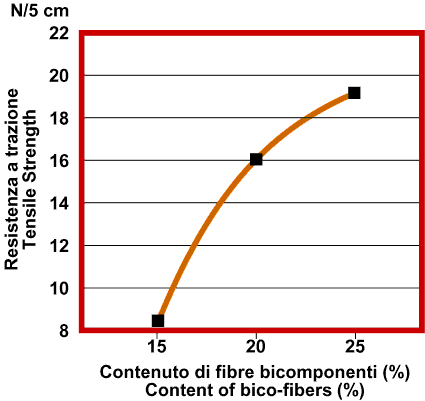
Figure 12: CD Tensile Strength as a function of amount of AL-Special-C, 1.7 dtex fibres in a 95 g/sqm product
New fibres for dust reduction: AL-Adhesion
During the past few years dust has become a major concern in air laid production.
When using latex bonded air laid for wipes, there is practically no dust. But with the fibres existing today for thermally bonded air laid, the dust problems have been a major obstacle for the introduction of thermally bonded air laid wipes.
For thermal bonded air laid absorbent cores for fem. care products the dust problem has not been so much in the final product as in converting the product. The dust level seen with the existing fibres would certainly be a problem if the thermal bonded air laid absorbent core was to be used on a diaper line.
During the past couple of years we have therefore been working intensively on developing fibres to reduce the amount of dust both in the final product and in the converting process.
To our knowledge there is really no standard or common test method for measuring the dust created. Below is a description of how we have measured the dust in our tests.
The nonwovens are cut in pieces, 12 by 25 cm. After conditioning for 24 hours the samples are weighed (with an accuracy of ±0,l mg). The sample is then fixed with two clamps with a length of 12 cm and both mounted on an arm. One arm is stationary and the other is rotatable and is attached to a spring.
The rotatable arm is rotated 45° towards the fixed arm so the nonwoven sample goes from a "stretched out" condition to a "relaxed" condition. The arm is then released, whereby the action of the spring returns the rotatable arm to its original position and is stopped by the nonwoven sample. This sample is then subjected to a small vibration and stretching effect, similar to the conditions a nonwoven roll is subjected to, when it is unrolled at the converter. The vibration and stretching result in loss of loose fibres, i.e. dust. The spring force is rather small to make sure the nonwoven sample is not being substantially deformed or damaged during the test.
This procedure is repeated 50 times for each nonwoven sample and the sample is then weighed again. The dust created is the weight loss of the sample.
We chose the route to try different copolymers and special polymers to be blended with the standard polyethylene in order to make a fibre that would allow easy attachment of the wood pulp fibres to the synthetic fibre.
We actually did have a solution already 2 years ago, but the supplier of the special polymer decided to stop production of that polymer, just after we had introduced the new fibre - to the disappointment of both our customers and us. Therefore we had to go back and look at other polymers from different suppliers.
We ended up making fibres with 20 different polymers or additives at our pilot line and these fibres were all blended with pulp and hand sheets were made on a small M&J line. The sheets were bonded in an oven and the dust and tensile strength were compared for all 20 types of fibres.
Of these 20 possibilities two candidates were chosen. These two candidates were the best with respect to dust, tensile strength, process conditions and price. These two candidates were then used in ratios of O to 10% of the sheet material to find the optimum blend level.
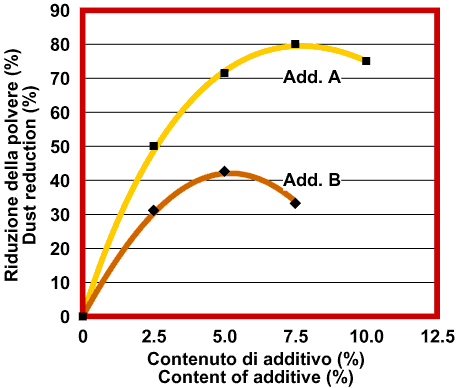
Figure 13: Dust Reduction in % in a 80 g/sqm product compared to AL-Special-C (20% bico fibres, 1.7 dtex, 6 mm)
The dust reduction compared to AL-Special-C when using these two candidates is shown in Figure 13 depending on the content of the special polymer. A content of zero percent corresponds to using the AL-Special-C fibre. Polymer A reduces the dust considerably more than polymer B with increasing content. Fortunately polymer A also gives the highest tensile strength of the two polymers, which can be seen from Figure 14. Here the bonding index is used rather than the CD tensile strength. The calculation of bonding index (BI) is shown in figure 15.
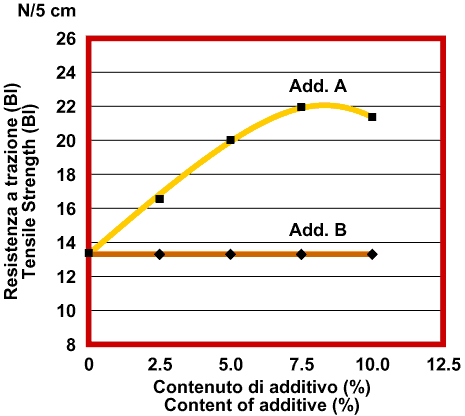
Figure 14: Tensile Strength (BI) in a 80 g/sqm product with 20% bicomponent fibres, 1.7 dtex, 6 mm with different levels of additives in the PE sheet
BI: Bonding Index (N/5 cm)
MD: Tensile strength in machine direction (N/5 cm)
CD: Tensile strength in cross direction (N/5 cm)
Aw: Actual weight (g/sqm)
Nw: Nominal weight (g/sqm)
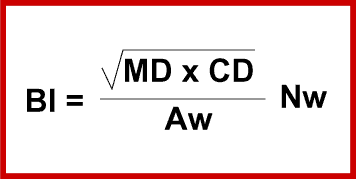
Figure 15: Calculation of Bonding Index
In the new fibre to reduce dust - the AL-Adhesion-C fibre - it was therefore decided to use polymer A, and this new fibre has now been tested extensively at both Dan-web, M&J and also on commercial lines. AL-Adhesion-C has been compared to AL-Special-C and compared to competing fibres at different temperatures.
Figure 16 gives a comparison between different fibres for creation of dust. This comparison is representative of all the results we have from the different tests. Cell-Bond fibre is a fibre from Hoechst Celanese (now KoSa).
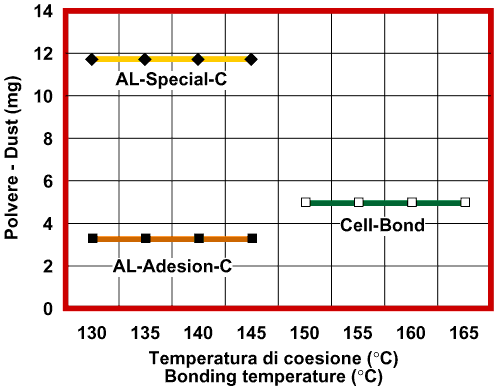
Figura 16: Polvere formata da un nontessuto da 85 g/mq con 20% di fibra bicomponente: 4 mm, 1.7 dtex per AL-Special-C e AL-Adhesion-C e 3 dtex per Cell-Bond
It is clear that the new AL-Adhesion-C fibre reduces the dust problems very much compared to the AL-Special-C fibre. The AL-Adhesion-C fibre also reduces dust compared to the Cell-Bond fibre.
Figure 17 clearly shows that at the same time AL-Adhesion-C offers much higher tensile strength - especially with increasing temperature - than both AL-Special and Cell-Bond.
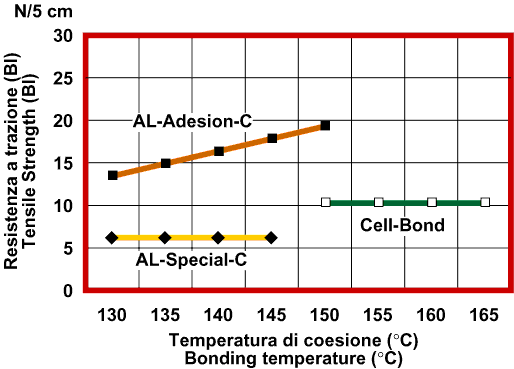
Figure 17: Tensile Strength (BI) as a function of temperature for a 85 g/sqm product with 20% bicomponent fibres: 4 mm, 1.7 dtex for AL-Special-C and AL-Adhesion-C and 3,0 dtex for Cell-Bond
Other new types of fibres for air laid
It is obvious that the new AL-Adhesion-C fibre is a big step forward in the reduction of dust problems, and it will certainly influence the balance between latex bonded air laid and thermal bonded air laid. But latex bonded air laid will still have less dust than thermal bond with AL-Adhesion-C. We will therefore still be working on developing bicomponent fibres, which can reduce dust even more.
Other types of fibres that will be interesting for the air laid industry may be:
• A superbulk bicomponent fibre offering more bulk than the concentric type without loosing tensile strength. This fibre is available already and is being used extensively for dry laid ADL (Acquisition Distribution Layers), but has not been used much within the air laid industry yet.
• Coarser fibres like 6,7 dtex or 10 dtex bicomponent fibres for acquisition- and distribution layers.
• More durable hydrophilic bicomponent fibres for the same applications.
• Hydrophobic bicomponent fibres.
• Bicomponent fibres with sheath material melting at 100 °C or lower.
These fibres are available already, but some of them have not yet been tested in air laid applications.
The new AL-Adhesion-C fibre also offers some new opportumities. Because of the high tensile strength this new fibre gives, we may be able to reduce the amount of PE again and increase the amount of PP to make a stiffer fibre and thereby be able to increase the output on the air laid line.
FiberVisions still have spare capacity for production of bicomponent fibres and can also easily increase the capacity when needed. Further more we are prepared to develop more fibres for the air laid and also tailor make existing fibres for the air laid industry, if somebody can tell us what is needed.
Conclusion
It has been shown that although the sales of air laid thermally bonded products have increased very much during the last year or two, latex bonded air laid still has by far the biggest share of the total air laid output.
Over the past 6-7 years several new thermal bondable fibres have been introduced that improves the thermal bonded products, and some of these fibres have been presented here. Graphs are shown that indicate how the tensile strength varies with different fibre properties. As the tensile strength will also depend on type of line, line speeds and many
other factors these graphs only show trends, that can be used when choosing the type of fibre to work with. One should never expect to obtain exactly the same tensile strength on a commercial line.
A new fibre - AL-Adhesion-C - has also been introduced. This fibre reduces dust and offers much higher tensile strength than other types of fibres on the market. This fibre will be able to improve the performance of thermally bonded air laid products considerably, so the demand for thermal bonded may increase and shift the ratio between latex and thermal bonded products.
FiberVisions has the capacity, the capability and a big interest in supporting the air laid industry and is also committed to do so.
|

















